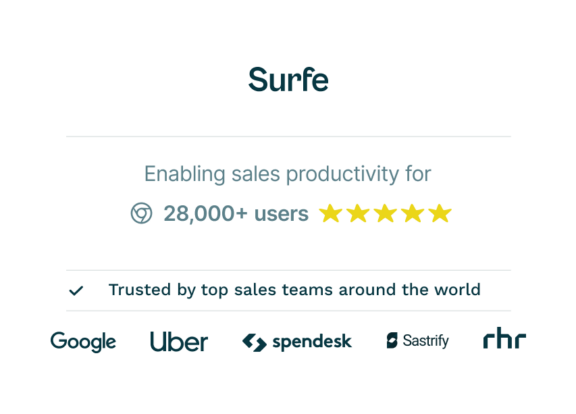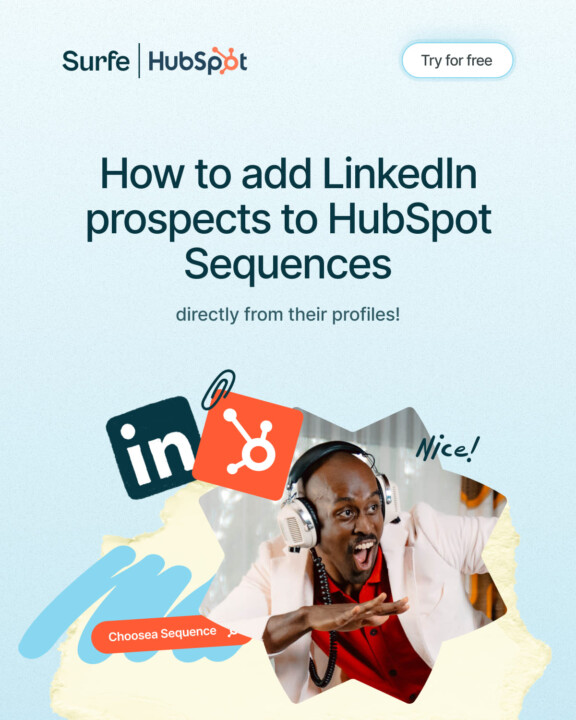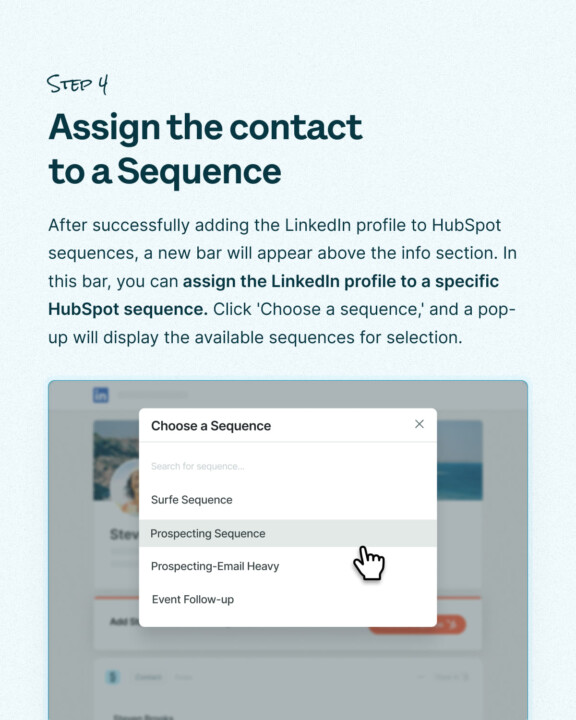Reaching Real Estate Executives: How to Sell to the Property Industry

Tired of reaching out to real estate bosses only to be left on read and wondering where you went wrong? We hear you. The real estate industry can be a hard nut to crack. With intense pressures, high-stakes deals on the table and constantly evolving regulations, real estate executives are some of the trickiest decision makers to get hold of. And trying to land a sale can be even more difficult when you don’t have a tailored sales proposition in place.
These professionals operate in a fast-paced, competitive environment and have unique challenges and goals that require a thoughtful, strategic approach. In this article, we’ll explore how to successfully sell to real estate executives by employing a multi-touch, multi-channel strategy, utilizing buyer intent data, and saving you time with the right automation tools.
Let’s dive in. Need to skip ahead?
- What is a Multi-Touch, Multi-Channel Sales Strategy?
- Harnessing the Power of Buyer Intent Data
- Essential Tools for Selling to Real Estate Executives
What is a Multi-Touch, Multi-Channel Sales Strategy?
When selling to real estate executives, a single point of contact is rarely enough. You need a multi-touch, multi-channel strategy that keeps your prospects engaged across various platforms and through different methods of communication. This involves reaching out through LinkedIn, email, phone calls, and potentially other channels, all while following a well-thought-out sequence designed to build familiarity and trust.
For instance, you might start with a LinkedIn connection request and a brief note on day one. Follow up with a cold call on day two to introduce yourself and your offering. On day three, send an email that expands on the conversation, and on day four, continue the dialogue on LinkedIn. This approach ensures that you stay top-of-mind while gradually building a relationship with the executive.
Leveraging LinkedIn for Social Selling
LinkedIn is a powerful tool for connecting with real estate executives, but successful social selling requires more than just sending connection requests and spamming their inboxes with mass messages. It’s about engaging thoughtfully and building a relationship over time.
- Engage Before You Connect: Start by following the executive and engaging with their content. Comment on their posts, share their insights, and show that you’re genuinely interested in their work. This pre-engagement warms them up for your connection request.
- Personalized Connection Requests: When you send a connection request, personalize it by referencing something specific they’ve posted or a recent accomplishment. This shows that you’ve done your homework and are genuinely interested in connecting.
- Continued Engagement: After connecting, don’t jump straight into a sales pitch. Continue to engage with their content, offering insightful comments and sharing relevant articles. This helps build rapport and trust.
- Initiate a Meaningful Conversation: When you finally reach out with a message, make sure it’s conversational and relevant. For instance, “I saw your post about the recent trends in commercial real estate—this is something we’ve been working on as well. I’d love to hear your thoughts on how the industry is evolving.”
Mastering Cold Emailing
Cold emailing remains one of the most effective ways to reach busy real estate executives, but it must be done with care and precision.
Crafting a Strong Subject Line
Your subject line needs to grab attention without being overly salesy. Consider something like “John, Improving Your Property Management Strategy” to pique their interest.
Personalization is Key
Tailor each email to the recipient. Reference a recent project, acquisition, or industry trend that is relevant to their business. This shows that your email is not just another generic pitch.
Focus on Value
Quickly get to the point of how you can solve their specific pain points. For example, “Our solution helps streamline property management processes, reducing overhead and improving tenant satisfaction.”
Follow-Up Strategy
A well-timed follow-up can be the difference between a cold lead and a warm one. Don’t just repeat your initial message; add new value each time, such as industry insights or case studies.
Timing Matters
Send your emails at times when they’re most likely to be read—typically mid-morning on a weekday. Avoid early Mondays or late Fridays when your email is more likely to get lost in the shuffle.
The Art of Cold Calling
Cold calling can be challenging, especially when dealing with high-level real estate executives. But when executed well, cold calling can be a great tactic for converting busy executives.
- Preparation is Crucial: Before making the call, thoroughly research the executive and their company. Understand their current projects, challenges, and goals so that you can tailor your pitch accordingly.
- Develop a Flexible Script: While having a script is essential, it should serve as a guide rather than a rigid template. Be ready to adapt based on the executive’s responses. Focus on how your solution addresses their specific needs, such as “Our technology has helped other real estate firms reduce vacancy rates by streamlining tenant acquisition.”
- Navigating Gatekeepers: Often, you’ll need to get past a gatekeeper before speaking to the executive. Be polite and clear about the purpose of your call, and if possible, mention a specific challenge the company is facing that your solution addresses.
- Handling Objections: Be prepared to address common objections. If the executive says they’re not currently looking for a new solution, you might respond with, “I understand, but we’ve seen how our clients have achieved significant cost savings with our approach—might it be worth a brief conversation to explore?”
Synchronizing Channels for Maximum Effect
Plan your outreach so that each touchpoint builds on the last. For instance, if you’ve had a positive interaction on LinkedIn, follow it up with a well-timed email that references your previous conversation. Then, use a cold call to reinforce your message and address any questions.
Ensure that your message is consistent across all channels. This consistency reinforces your value proposition and helps build a cohesive narrative around your offering.
Regular, relevant interactions help keep you top-of-mind. Utilize each channel to reinforce your presence, ensuring that the executive is continually reminded of the value you bring to their business.
And crucially, make sure all your processes are ironed out so that you don’t spend hours each week adding contacts to these sequences. For example, if you’re using HubSpot Sequences, you can simply add your LinkedIn contacts right into a sequences, directly from their LinkedIn profile with Surfe.
Harnessing Buyer Intent Data to Improve Your Outreach
Buyer intent data is a game-changer when it comes to identifying when a prospect is ready to engage. This data is derived from online behavior, such as visits to specific web pages, content downloads, and social media interactions, which can signal an executive’s interest in your solution.
Recognizing Key Signals: In the real estate sector, relevant signals might include executives researching property management software, attending webinars on real estate technology, or engaging with content about new market trends.
Personalizing Outreach: Use these signals to tailor your outreach. For example, if an executive has been researching smart building technologies, craft your message around how your solution can enhance their projects in this area.
Aligning Sales and Marketing: Ensure that your sales and marketing teams are working together. Consistent messaging across both teams is crucial in reinforcing your value proposition and keeping the executive engaged.
Fine-tuning and Testing
Buyer intent data is not static; it changes as your prospects’ needs evolve. Regularly monitoring this data allows you to adapt your approach in real-time. If a prospect’s focus shifts to a new area, adjust your outreach to align with their current interests. This might involve changing your messaging or introducing new products that better fit their needs.
Use buyer intent data to refine your multi-channel approach. If certain channels or messages are not resonating, be flexible and willing to experiment with different tactics.
Essential Tools for Selling to Real Estate Executives
Making the Most of Your CRM’s Features
A robust CRM system is the backbone of your sales process, especially when targeting top executives in the real estate industry. It helps you manage relationships, track interactions, and streamline communication.
How Your CRM can Help Your Outreach
- Comprehensive Property and Contact Management: Organize detailed information on properties, deals, and key contacts to ensure a smooth sales process.
- Interaction History: Keep a complete record of all touchpoints, helping you maintain a cohesive narrative with your prospects.
- Pipeline Visibility: Monitor deal stages and forecast revenue, allowing you to prioritize your efforts effectively.
Optimizing Outreach with Automation Tools
Tools like Outreach.io, Lemlist, and Salesloft can significantly enhance your multi-channel strategy by automating repetitive tasks and personalizing your outreach at scale.
- Automated Outreach Sequences: Schedule and automate your email campaigns and follow-ups, ensuring no prospect falls through the cracks.
- Personalization at Scale: Customize your messages based on prospect data, allowing you to maintain a personal touch while reaching a larger audience.
- Analytics and Adjustments: Track the performance of your outreach efforts in real-time and make necessary adjustments to improve effectiveness.
Leveraging Buyer Intent Tools
Platforms like Bombora and 6sense provide valuable buyer intent data that can inform your sales strategy. Integrating these tools with your CRM and outreach platforms allows for a seamless, data-driven approach.
- Holistic Prospect View: Combine buyer intent data with CRM records to get a complete picture of your prospect’s journey.
- Targeted Messaging: Use intent data to refine your messaging and timing, ensuring you reach out when the prospect is most likely to engage.
Maximizing LinkedIn Sales Navigator
If you’re in sales, there’s no question that you’ll already be using LinkedIn Sales Navigator to make your outreach more effective. But are you taking advantage of its key features to really reach your prospects?
- Tailored Lead Searches: Use filters to find executives based on specific criteria such as location, company size, and industry focus.
- Relationship Management: Track your interactions and set reminders for follow-ups, ensuring that you stay on top of your sales pipeline.
Enhancing Contact Data with Enrichment Tools
Finding that your email campaigns are coming back with high bounce rates? You might have outdated contact data in your CRM. Enrichment tools like Surfe can help you find the right email addresses for real estate executives. And with a 93% find rate, Surfe’s data quality is unmatched in the market.
Once you’ve enriched your lists and identified those invaluable insights into your prospects’ job roles and companies, you can use Surfe’s personalized message templates for LinkedIn and InMail messages to really refine your outreach. Tap into the specific pain points of your segment and watch your conversion rates boom.

Crafting the Perfect Message for Real Estate Executives
Pinpointing Their Challenges and Priorities
To effectively communicate with real estate executives, you must first understand their unique pain points. These often include optimizing property operations, staying compliant with regulations, and maximizing returns on investments.
Align Your Message:
- Direct Relevance: Tailor your communication to align with the executive’s current focus, whether that’s improving property efficiency, reducing costs, or enhancing tenant experiences.
- Industry Awareness: Stay informed about the latest industry trends, such as sustainable building practices or digital transformations in real estate, and incorporate these into your messaging.
Delivering Value-Driven Messages
When reaching out to real estate executives, your message must be clear, concise, and focused on the value you bring:
- Highlight the Benefits: Clearly articulate how your solution addresses their specific challenges, offering a compelling reason for them to consider your offering.
- Show the ROI: Real estate executives are particularly focused on the financial impact of any new investment. Use concrete examples to demonstrate the potential return on investment.
Building Trust and Establishing Credibility
Trust is crucial in the real estate industry, where executives often rely on long-term relationships and proven solutions:
- Position Yourself as a Thought Leader: Share industry insights, articles, and other content that demonstrates your expertise.
- Use Social Proof: While you don’t need to dive into detailed case studies, referencing other real estate firms that have benefited from your solution can strengthen your pitch.
- Be Transparent: Honesty and clarity go a long way in building trust. Be upfront about what your solution can and can’t do, and offer real-world examples of your successes.
Let’s Wrap it Up!
So, there you have it. A watertight strategy for how to get noticed by top executives in the real estate sector. By understanding their challenges, leveraging buyer intent data, and using the right tools, you can craft a sales strategy that resonates with these decision-makers.
Keep your prospect’s pain points in mind, and be aware of their channel preferences to strike while the iron is hot and give your outreach the best chance of helping you land a sale.

Want to make sure your emails are getting read by more real estate executives?
Surfe’s email finder is one of the best in the business, with a 93% success rate.
Frequently Asked Questions (FAQs)
How can I make more sales to real estate executives?
Don’t limit your outreach efforts to just one channel. Senior executives and decisionmakers are busy people, so you should craft your sales campaigns to be multi-channel so that you meet your prospects where they are.
What tools can I use to make sure my sales emails reach my prospects?
Enrichment solutions like Surfe can give you peace of mind that your lead lists contain accurate contact data. Once you know you’re sending your outreach emails to verified email addresses, you can avoid huge bounce rates.
What are the common pain points for real estate executives?
Senior leaders in the property industry are facing a diverse range of issues. Some of the big topics in this sector include: optimizing property operations, constantly changing regulations and maximizing return on investment.







